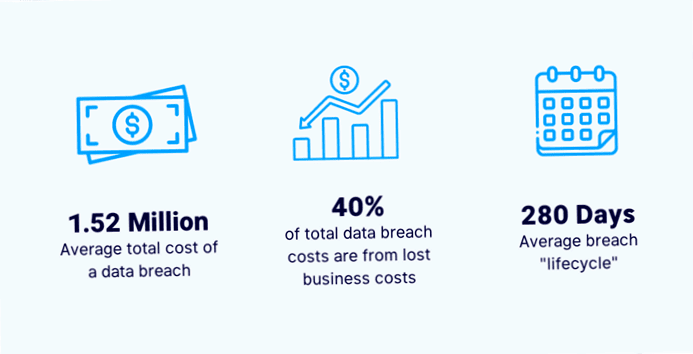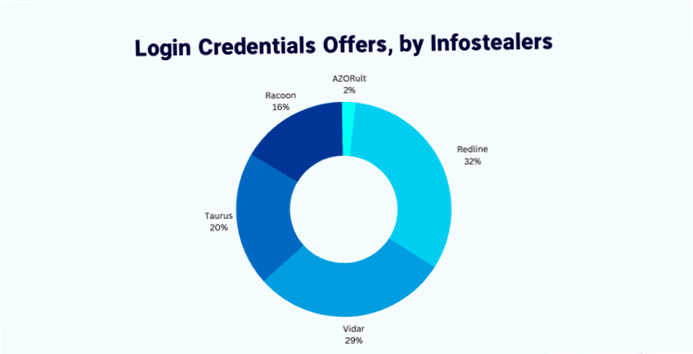In a world where the workplace has become almost entirely mobile and digital (click here for a more comprehensive definition of the digital workplace), one thing should be at the top of your priority list: Security.
Ensuring that all of your mobile data, systems and networks are always protected from potential threats is paramount to keeping your business running smoothly and efficiently. Whether you usually access a VoIP contact center from your cell phone, use a video conferencing platform on your smartphone, or use another mobile device, you need to be aware of the main threats you could face – and how to prevent them.
Would you like to learn more about this important topic? Our guide illustrates the top five mobile device security issues and suggests ways to prevent them – and protect your business.
What is mobile device security?
The term "mobile device security" refers to all those activities aimed at protecting data and information stored, accessed or shared on mobile devices. Mobile devices are not just smartphones; They also include tablets, laptops, smartwatches, services like magicJackand IoT devices.
All the data these devices handle is under constant potential threat. This is especially concerning when these devices are used in a business context. Establishing a solid mobile device security framework will ensure all your mobile devices are protected.
This consists of identifying specific security metrics to measure, monitoring your mobile devices 24/7, and being proactive when a potential problem is identified. Failure to act quickly when something suspicious happens can be catastrophic.
The possible consequences of mobile security attacks
Consider the following: When you work in your office, you don't want unauthorized people entering the building, as this can pose a potential threat. For this reason, you probably have some form of installed proper access control security to protect your physical workplace and the people in it.
The same concept should apply to your digital devices. If an unauthorized person is successful with their malicious attempt to access and wreak havoc on your systems and networks, this is incredibly problematic. Read on to uncover the four major impacts cyberattacks can have on your devices.
1. Loss of earnings
Once a hacker has gained access to your systems, you can suffer a significant loss of money. This can be done in two different ways:
- The hacker can gain control of confidential information, such as z. B. internal and customer credit or debit card information, and therefore conduct financial transactions beyond your control.
- As a result of the security breach, you need to shut down your business while you deal with the attack. You lose billable hours, profits and have to pay for legal fees. In fact, the average total cost of a data breach in 2020 was $1.52 million. This says nothing about the potential damage to your company's reputation and loss of future revenue.
The bottom line? Your business could lose millions in a matter of minutes.

2. Data Loss
Another significant risk of a cyberattack on your mobile devices is data loss. Hackers can either permanently delete data, expose it to the public or hold it for ransom via ransomware. This can have a huge impact on businesses.
For example, think of companies that are in the business of extended reality, banks and even local government offices. These companies process huge amounts of data every day – their business largely depends on it. If any of these organizations were hacked and their data deleted or stolen, the consequences would be catastrophic.
3. Loss of brand reputation and trust
You've worked hard to earn your customers' trust and build your brand's reputation as a credible, authoritative and trusted leader in your field. Losing all that would be a huge problem – and losing it due to poor mobile security would be even more frustrating.
Major cyberattacks on companies go public (and viral) within hours, causing customers of those companies to disassociate themselves from them – whether by closing their accounts, terminating their memberships, or simply stopping doing business with them. In fact, according to research, 83% of customers stop spending at a company for several months after a breach, and more than 20% say they will never shop at that company again.
4. Loss of compliance
If your business operates in a highly regulated sector – such as z. B. In healthcare, finance, or insurance – you need to make sure you comply with certain regulations related to security. Failure to comply with standards and policies can not only have disastrous effects on your business and its operations, it can also cause you to fail your regular safety audits and result in fines and penalties.
Now that we've highlighted the importance of mobile security, let's find out the five most common types of mobile security threats and how you can avoid them.
1. Unsecured public Wi-Fi networks
How often did you need to use your business smartphone or laptop when you were in a public area and quickly access the only available Wi-Fi network? Well, we have some bad news: If you're in the habit of doing this often, you're putting your business at increased risk of attack.
Public and free networks – ones you're likely to find in coffee shops, libraries and airports – are also unsecured, which means they're much easier for attackers to access.
Prevent it this way
The obvious way to avoid this potential risk is not to use these networks. If you really must use it, remember not to enter personal information or access sensitive data like your email, social media account or mobile banking apps. It's also a good idea to have it email threat protection on each of your mobile devices and use a VPN that provides encryption.
2. Poor (cyber) hygiene
The global pandemic has highlighted the importance of good hygiene to stay healthy and protect ourselves and others from the COVID-19 virus. But did you know that you should also apply the same concept to your cyber life?
Yes, practicing cyber hygiene isn't just one thing, it's one of the best ways to minimize the risk of being attacked. Mobile devices with poor cyber hygiene – like z. B. weak passwords, shared data, and outdated apps and operating systems – are at much higher risk of being attacked by cybercriminals.
Prevent it like this
Practicing good cyber hygiene requires the following methods, such as email verification, automatic app and operating system updates, and strong passwords. Likewise, you should never share your devices with anyone else, and you should always remember to log out of an app or website when you're done using it.
3. Botnets
You may be familiar with chatbots, but do you know what botnets are? If the word doesn't sound too threatening, you're in for an unpleasant surprise.
Botnets occur when two or more computers are accessed simultaneously and controlled by a hacker. With a botnet, multiple cyber threats can occur, including the installation of Trojans, viruses and other malware.
Prevent it like this
Cyber hygiene is essential to prevent your mobile device from becoming part of a botnet. Download only trusted, legitimate apps and software, don't use unsecured Wi-Fi networks, and implement security automation for faster incident response.

4. Harmful apps
You love apps? You're in good company, considering the average smartphone user has a whopping 40 apps installed on their device. However, when downloading new apps, you must always stick to trusted sources. Never download third-party apps as they can pose a higher risk of malware and other cyber threats.
Prevent it this way
The best way to avoid malicious apps is to download them only through Google Play and the Apple App Store. Make sure all apps are updated regularly to address security vulnerabilities.
5. Bad or defective cryptography
With the increasing popularity of remote work, video conferencing platforms and note-taking software (such as Otter AI or other Otter AI alternative), digital data sharing is the name of the game in today's business world. And while it's important to stay in touch with your colleagues digitally, it also comes with potential risks.
For example, if you use software that doesn't have the right kind of encryption or a powerful algorithm, you may be more vulnerable to cyberattacks. This, in turn, means that the content of your conversations may not be protected and that cybercriminals can access information you share in them.
Prevent it this way
Again, one of the best ways to minimize this risk is to make sure that you and the people you communicate with always use trusted, legitimate, and up-to-date online tools. For added security, use secure software to send and sign important documents, such as Pandadoc signing software.
Keep your mobile devices secure
As more and more businesses rely on mobile devices for their daily tasks and operations, improving cybersecurity has never been more important. Mobile threats are always around the corner, but there are many steps you can take to prevent them.
In this guide, we've identified the top five mobile threats and outlined simple but basic ways you can prevent them from potentially disrupting your business.